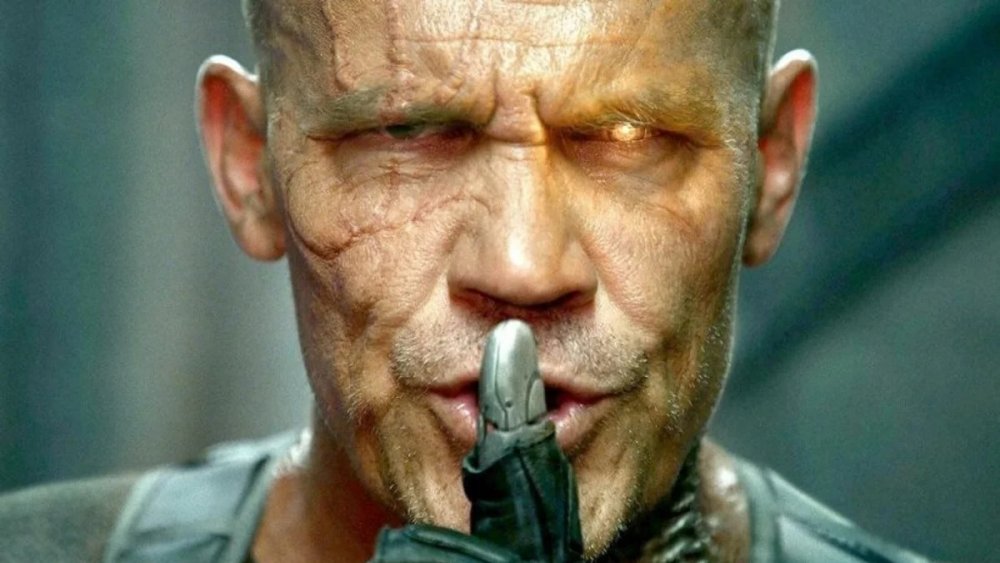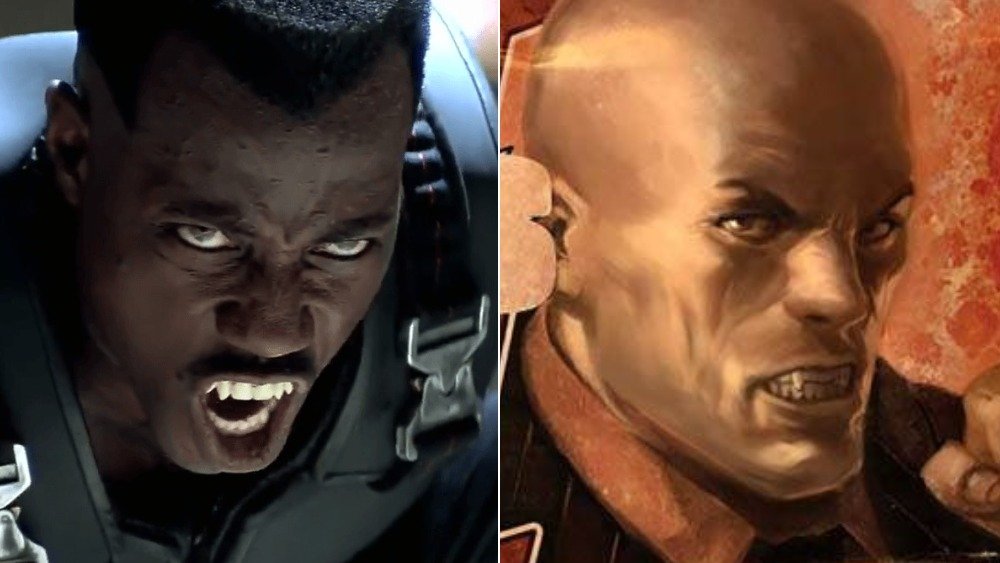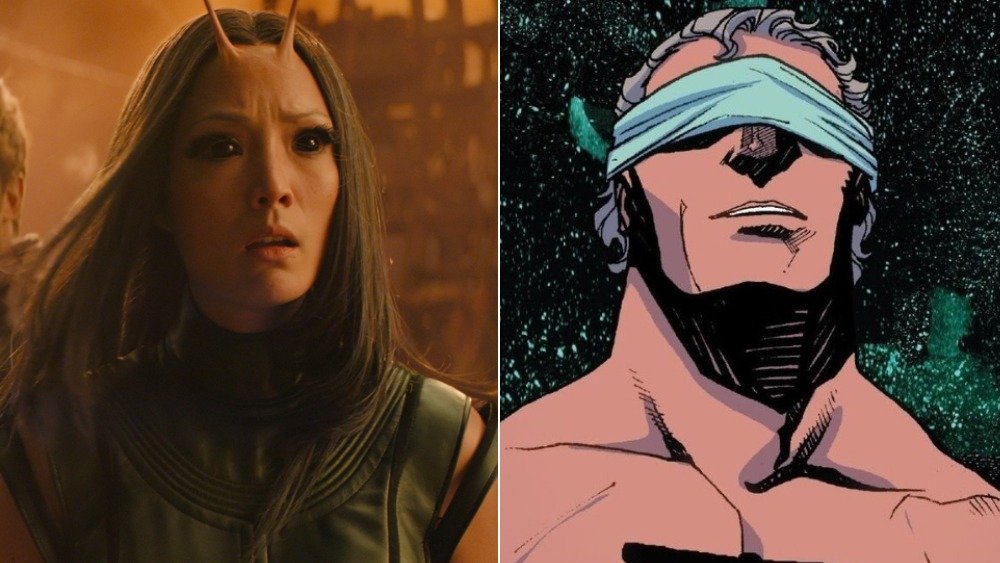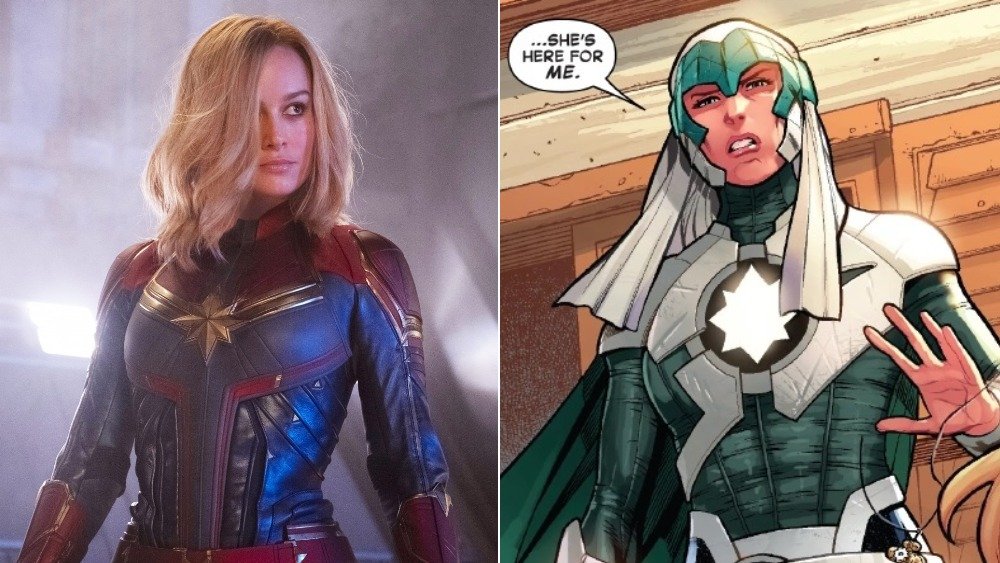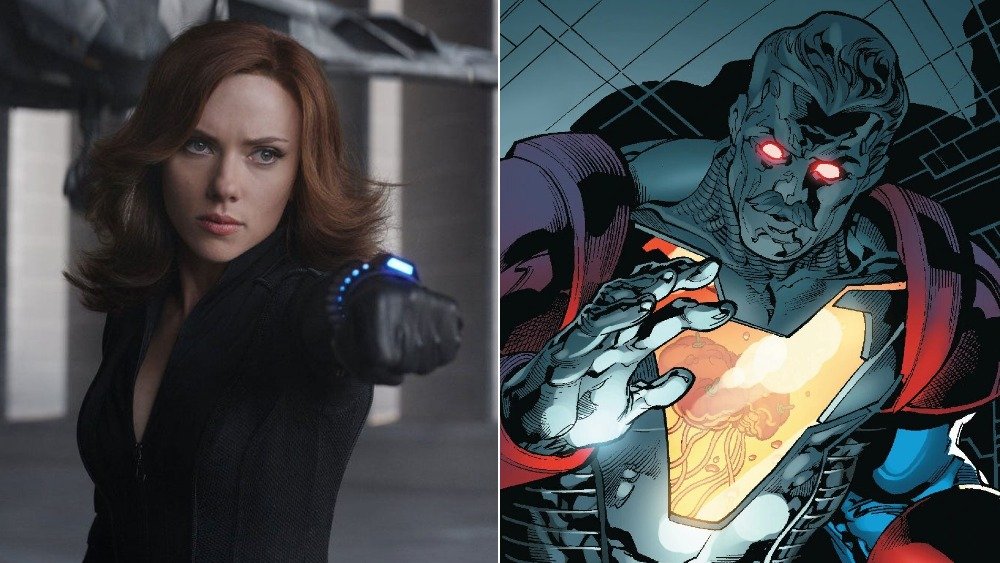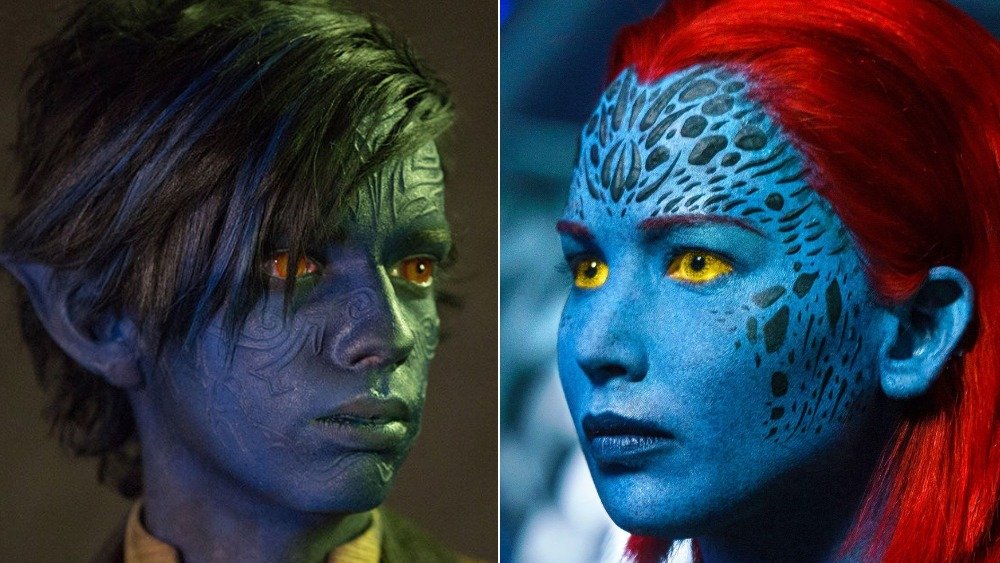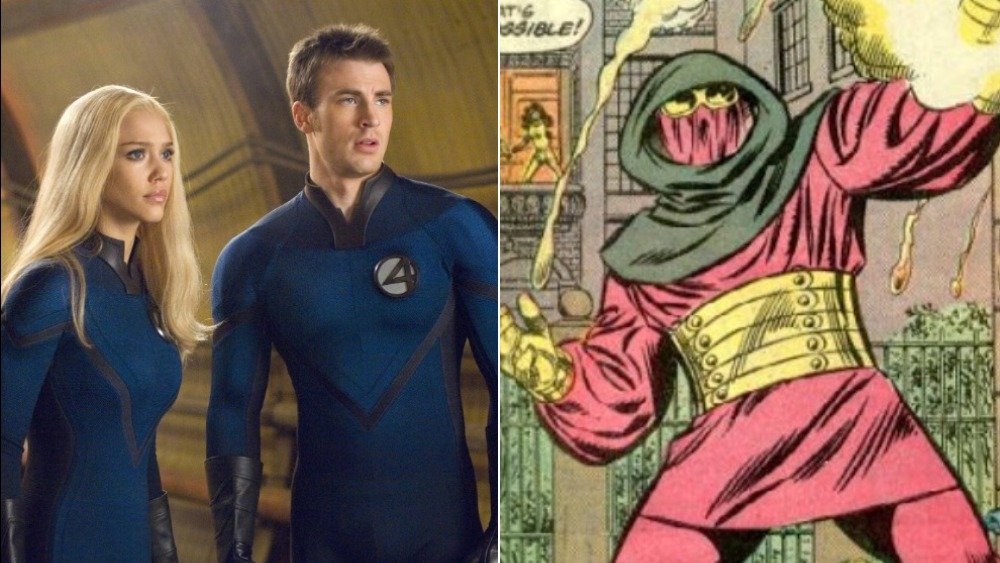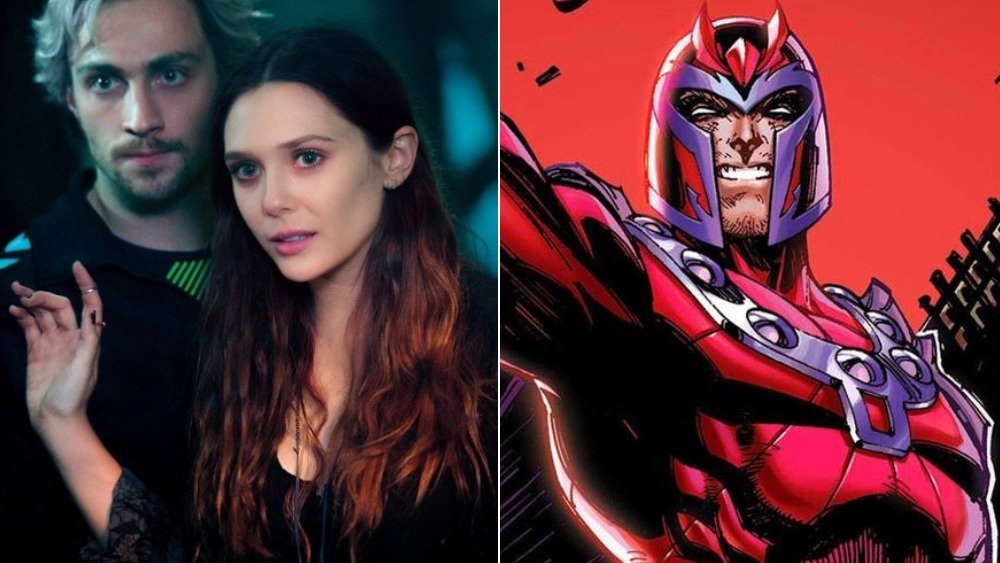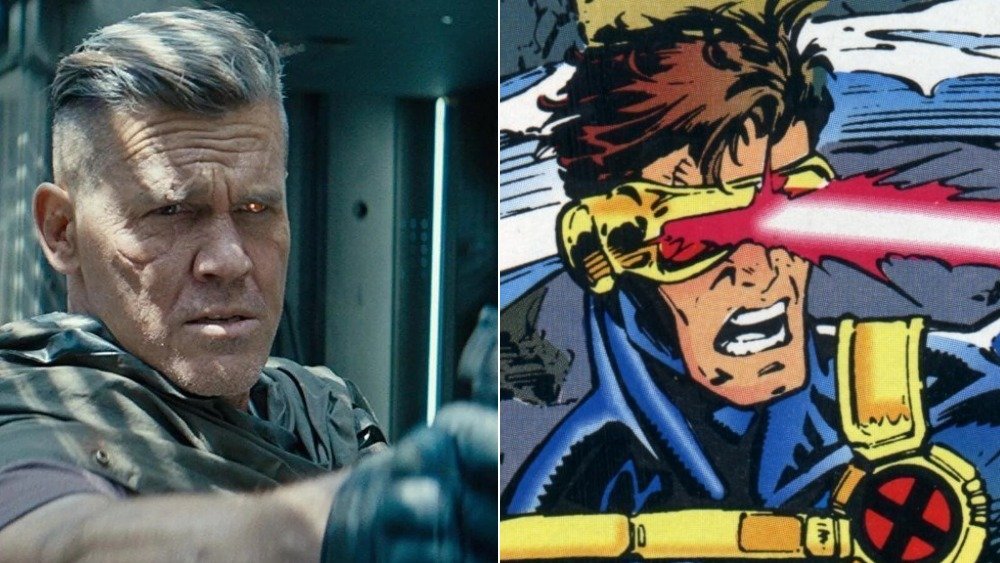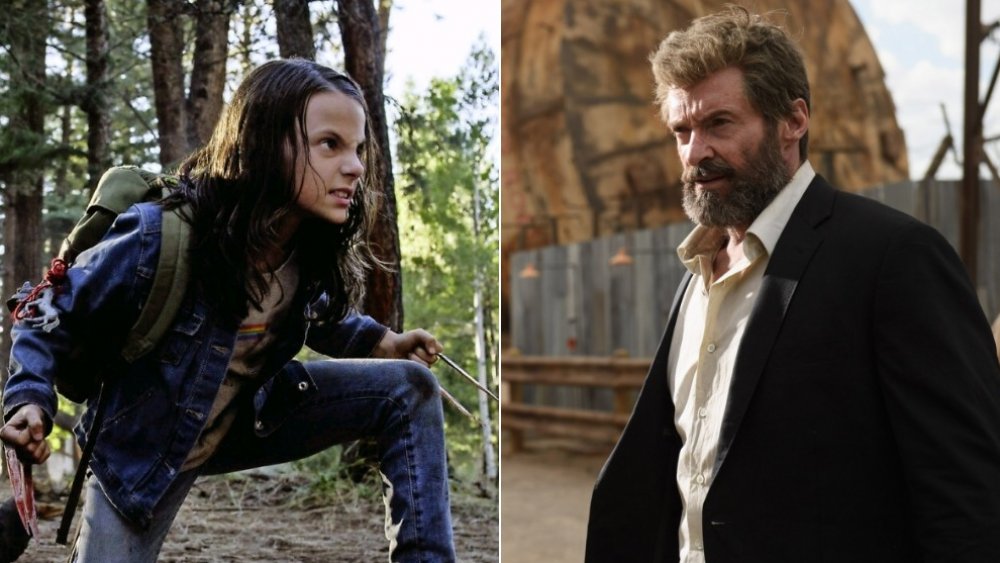Marvel Superheroes You May Not Realize Have Super Parents
Everybody's got parents, even Marvel superheroes. And while we're all familiar with father/son relationships like the one between Howard and Tony Stark, not every superhero family tree is so well-known. In fact, there are quite a few superheroes out there with incredibly powerful parents, and we're not just talking about Thor and Odin. We're talking about famous vampire hunters, time-traveling cyborgs, and parasitic monsters, but for one reason or another, their parentage has never been explored on-screen.
After all, there's only so much backstory you can get into when you're making a movie, and as a result, there's often not enough room for a complicated origin story involving super parents. Other times, these stories are simply way too crazy to be adapted for the big screen. But if you want to know which of your favorite characters come from very powerful parents, keep reading to discover the famous Marvel heroes who come from super stock.
Blade's real dad became a vampire in prison
Marvel started development on a Blade movie back in 1992, when the company was in dire straights. Comic sales were down, and Marvel's last live-action offering (1990's Captain America, widely considered one of the worst superhero films ever made) was a total disaster. So when Blade finally got the go ahead, Marvel decided to give the filmmakers creative freedom. The movie hit cinemas in 1998, and it was a world away from Marvel movies of the past.
Screenwriter David S. Goyer made Blade grittier and more grounded. In his story, Blade gets his powers when his mother is bitten by a vampire during childbirth, just like in the comics. However, the Blade trilogy makes no mention of the Daywalker's long-lost biological father. In the source material, Blade is raised and trained by a vampire hunter named Jamal Afari (replaced by the non-canonical Abraham Whistler in the movies), who took him in as a boy. But what about his dear old dad? Well, Blade's real father is Lucas Cross, a man who's convicted of a crime that he didn't commit and is imprisoned, all while dying of cancer.
Knowing his time is limited, Cross agrees to let his cellmate (who just so happens to be a vampire) turn him, and he uses his freshly developed powers to escape from prison. He then captures his superhero son and tries to make him drink a virgin's blood to fulfill an ancient prophecy, which is a really weird way of bonding with your estranged son.
Mantis has a psychic martial artist for a father
Marvel fans started getting excited about the debut of Mantis when trailers for Guardians of the Galaxy Vol. 2 began to drop, but the version played by Pom Klementieff in the MCU is a big departure from the comic book character created by Steve Englehart, who told Polygon that he was "not happy" about the changes. "That character has nothing to do with Mantis," he said. "I really don't know why you would take a character who is as distinctive as Mantis is and do a completely different character and still call her Mantis." In James Gunn's movie, Mantis is an insectoid being raised by Ego, who exploited her empathic abilities for his own selfish benefit. The Mantis who debuted in 1973's The Avengers #112 wasn't an alien, though she was trained by them.
The original Mantis was taken in by a Kree sect who trained her in martial arts and bestowed telepathic abilities on her. In other words, she was sculpted by aliens, though she was 100 percent human. As for her parents, Mantis is the daughter of a man named Gustav Brandt. He came to the aforementioned Kree sect when he lost his eyesight, and they trained him to fight without it. When he was strong enough, he vanished, leaving his child with the Kree. Brandt (who, like Mantis, has psychic powers) later took on the name Libra and joined the criminal organization Zodiac, but he ultimately had a change of heart and helped the Avengers before handing himself in.
Captain Marvel had Kree blood all along
Marvel drastically altered Captain Marvel's origins for her big screen debut, but that didn't really come as much of a surprise to those familiar with the character's complicated history. Air Force pilot Carol Danvers made her debut in 1968's Marvel Super-Heroes #13, a supporting player for Kree superhero Mar-Vell (a gender-swapped version was played by Annette Bening in the MCU film). Almost a decade would pass before Danvers started to turn into the hero we know her as today. She was given her own series called Ms. Marvel, and her story was retconned. It was revealed that an accident involving a Kree superweapon, the Psyche-Magnetron, spliced her human DNA with Mar-Vell's, imbuing her with the same incredible powers.
Her power set would change over the years (at one stage, she lost her abilities altogether after touching Rogue), but the source of them would remain the same up until 2018, when Marvel hit us with another huge Captain Marvel retcon. In The Life of Captain Marvel #3, it's revealed that Danvers actually had Kree blood running through her veins all along. When a strange device found among her father's belongings is activated and a Kree soldier shows up at the family home, we discover that Carol's mother, Marie, is actually Mari-Ell, a champion of the Kree Empire who was sent on a mission to Earth. She was rescued by widower Joe Danvers after she crash-landed in Boston.
Black Widow had to kill her crazy foster dad
Black Widow sacrifices herself for the greater good in Avengers: Endgame, but before she heroically leaps to her death, she has an interesting interaction with the keeper of the Soul Stone. When she and Hawkeye arrive on Vormir, Red Skull calls her "Natasha, daughter of Ivan." It's the first time her father has been mentioned in the movies, but those familiar with Black Widow's origins will no doubt recognize the name. In the comics, Ivan Petrovich Bezukhov rescues Natasha as a baby and becomes her guardian. He's instrumental in her upbringing (it's Ivan who introduces her to the infamous Red Room), but he isn't her biological dad. And that's a good thing, because years later, he develops romantic feelings for her. When he realizes that Romanoff will only ever see him as her father figure, he transforms himself into a powerful cyborg and threatens nuclear devastation, forcing Black Widow to kill him. Talk about a dysfunctional family.
Nightcrawler has shared the screen with his mutant mom
Marvel mutant Kurt Wagner (better known as Nightcrawler) has been played by two different actors on the big screen. Alan Cumming took on the make-up heavy part for 2003's X2, while younger actor Kodi Smit-McPhee was cast as the agile blue mutant in X-Men: Apocalypse and its disastrous follow-up, Dark Phoenix. There's no mention of Nightcrawler's parentage in any of these movies, despite the fact that his mother shares the screen with him in all three.
In the comics, Kurt Wagner is the son of Azazel (a member of an ancient, demonic race of mutants) ... and Mystique, played in the movies by Rebecca Romijn and Jennifer Lawrence. When they met in the comics, Mystique was married to a German lord named Baron Christian Wagner, a human who was completely unaware that his wife was a mutant. She wanted to have his child, but the aging nobleman was unable to get her pregnant. In her desperation, she began using her shapeshifting powers to sleep with other men, one of whom turned out to be Azazel. When she gave birth to a blue demon child, her baby daddy vanished, and to make matters worse, she was forced to kill Wagner, who knew something was up. She stood accused of murder, and so she saved her own skin. Mystique took the form of a villager and dropped Nightcrawler off a cliff.
The Invisible Woman and the Human Torch's dad dubbed himself the Invincible Man
When it comes to big screen adaptations, Marvel's First Family has had a pretty rough time of it. The Fantastic Four should be one of the jewels in the Marvel crown, but rights issues and artistic conflicts have led to the creation of some truly terrible movies. For example, 1994's The Fantastic Four was made on a shoestring budget (producer Bernd Eichinger reportedly made the cheapest movie possible simply to avoid losing the film rights), and the most recent reboot in 2015 bombed hard at the box office. Still, despite their lack of cinematic success, the Fantastic Four are some of the most important characters in comic book history, but for two of these heroes, their family lives are kinda complicated.
In the comics, Sue and Johnny Storm (played by Jessica Alba and Chris Evans in 2005 and 2007, as well as Kate Mara and Michael B. Jordan in 2015) were fathered by a man named Franklin Storm, a brilliant doctor who went off the rails after he failed to save his wife. Eventually, he gets jailed for killing a loan shark in self-defense and ultimately becomes estranged from his two children. Years later, the disgraced surgeon gives himself superpowers and breaks out, dubbing himself the Invincible Man and fighting the Fantastic Four. The whole thing is a ruse, however. It turns out the heroes are actually fighting a Super-Skrull, and the real Dr. Storm is being held captive in the Skrull Throneworld.
Quicksilver and Scarlet Witch are the spawn of a powerful mutant
The saga of Scarlet Witch and Quicksilver's parentage is a complicated one, even by Marvel standards. Wanda and Pietro Maximoff were introduced in 1964's X-Men #4, where it was established that they were the children of Romany travelers Django and Marya Maximoff. This was retconned in 1979 when readers were told that Wanda and Pietro's father was actually the powerful mutant Magneto, whose wife had fled when she discovered she was pregnant. She died of exposure, but not before giving birth to twins, who were put into the care of the Maximoffs. This remained the official story for many years, but Wanda and Pietro's origin received another huge retcon in 2014 for reasons that go beyond comics.
At the time, Disney and Fox were locking horns over the twins. Fox wanted to use them in their X-Men movies, but the Mouse House/Marvel claimed that their history as Avengers meant they belonged in the Marvel Cinematic Universe instead. To make its case stronger, Marvel made massive changes during the AXIS event. In one pivotal moment, Wanda casts a spell that only works on people with her blood, and she discovers that Magneto isn't father to the twins after all. Not only that, but she and Pietro aren't even mutants. In the end, Quicksilver appeared in both the X-Men franchise (played by Evan Peters) and the MCU (played by Aaron Taylor-Johnson), while Elizabeth Olsen became Marvel's Scarlet Witch.
Cable's daddy is a well-known X-Man
Original X-Men member Scott Summers (aka Cyclops) might be the most hated Marvel character ever, but did you know that he fathered one of the coolest ones? Nathan Summers, better known as Cable, is the son of Cyclops and Madelyne Pryor, a clone of Jean Grey. Mister Sinister created Pryor when he discovered that Grey (who was AWOL at the time) and Cyclops were destined to produce a powerful mutant child, a child he hoped to bring under his control. Cyclops fell for the clone, and they brought Cable into the world. But if they're father and son, how come Cable looks older?
When Jean Grey showed up alive and well, Sinister's plot began to fall apart. His rival, Apocalypse, then kidnapped baby Cable, infecting him with a killer Techno-Organic virus that spread liquid metal and organic steel throughout his body. That's when a mutant visitor from the future showed up with a painful proposition for Cyclops. Sister Askani revealed that her people had the power to cure Cable's deadly virus, but he had to come back to the future with her, and it was a one-way trip. Cyclops was told that his son would become a savior some 2,000 years from now and reluctantly let him go. It wouldn't be their last meeting, however. The next time they came face to face, Cable (who's portrayed by Josh Brolin in Deadpool 2) was a grown man with some gnarly scars and some real issues.
Laura Kinney isn't a clone of Wolverine after all
Hugh Jackman brought his usual A-game as Wolverine in the 2017 send-off flick Logan, but the Australian star had some incredible support in that movie. Sir Patrick Stewart (Professor Charles Xavier) reminded everyone why he was knighted for services to drama, but a lot of the buzz was around newcomer Dafne Keen. The British-Spanish actress shone in her cinematic debut, putting in an intense performance as mutant Laura Kinney, aka X-23. The film left viewers believing that Kinney (created by writer Craig Kyle for the X-Men: Evolution TV series) was simply a clone of the clawed X-Men favorite, but a Marvel comic released a year later confirmed that she was actually Wolverine's biological daughter.
In 2018's Hunt for Wolverine: Adamantium Agenda #4, Kinney is joined by Iron Man, Spider-Man, Luke Cage, and Jessica Jones as she tries to locate an AWOL Wolverine. They follow the breadcrumbs to Mister Sinister's underground lab, where they discover that the villain has been cataloging both mutant and human DNA on a massive scale. When Tony Stark takes a closer look at the data, he discovers something huge about Kinney — the man she's come to see as a father figure really is her father. It turns out that her DNA is a mix between Wolverine and Dr. Sarah Kinney, the woman who carried her to term and became her adoptive mother.
